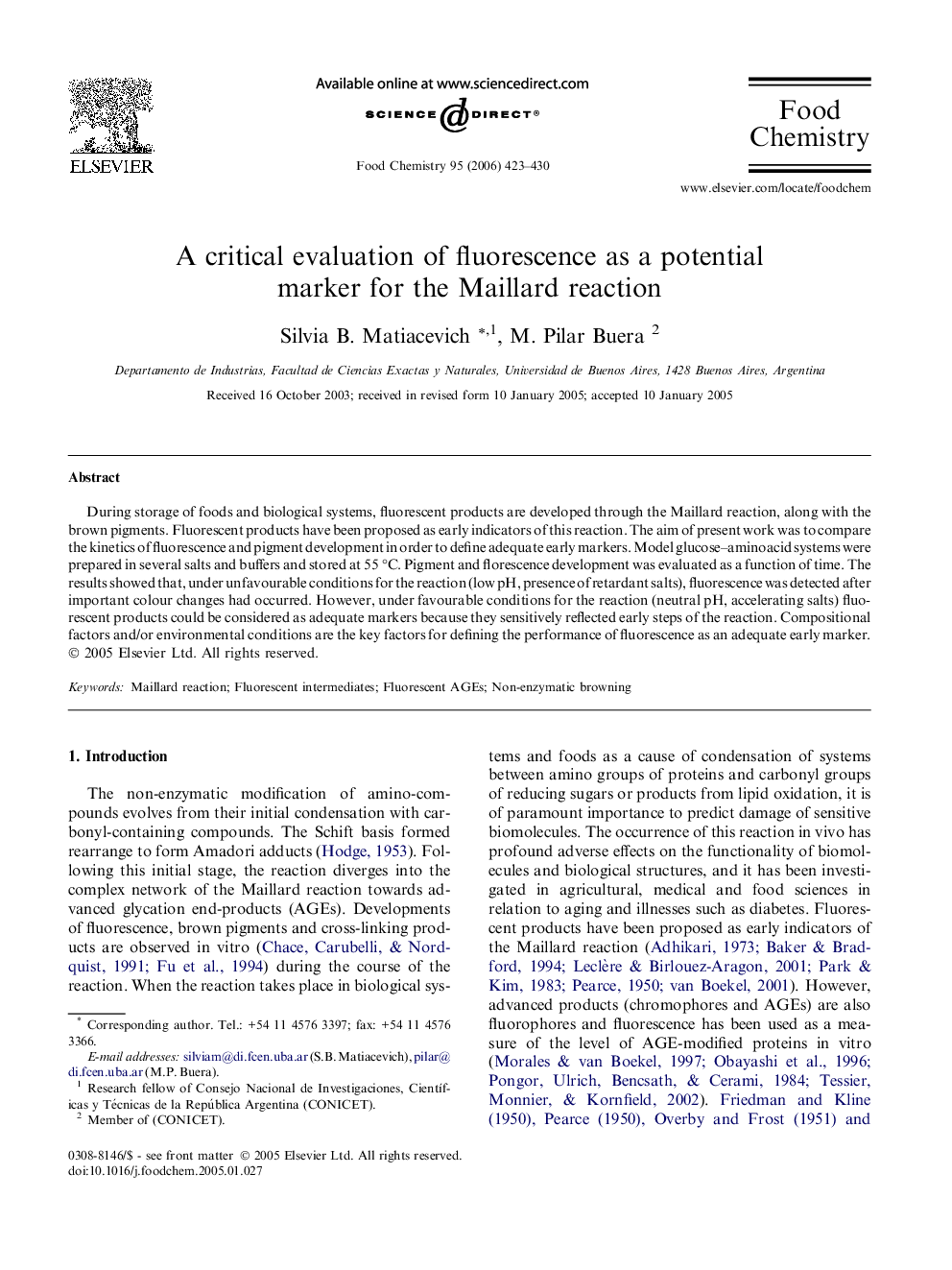| Article ID | Journal | Published Year | Pages | File Type |
|---|---|---|---|---|
| 1189365 | Food Chemistry | 2006 | 8 Pages |
During storage of foods and biological systems, fluorescent products are developed through the Maillard reaction, along with the brown pigments. Fluorescent products have been proposed as early indicators of this reaction. The aim of present work was to compare the kinetics of fluorescence and pigment development in order to define adequate early markers. Model glucose–aminoacid systems were prepared in several salts and buffers and stored at 55 °C. Pigment and florescence development was evaluated as a function of time. The results showed that, under unfavourable conditions for the reaction (low pH, presence of retardant salts), fluorescence was detected after important colour changes had occurred. However, under favourable conditions for the reaction (neutral pH, accelerating salts) fluorescent products could be considered as adequate markers because they sensitively reflected early steps of the reaction. Compositional factors and/or environmental conditions are the key factors for defining the performance of fluorescence as an adequate early marker.
